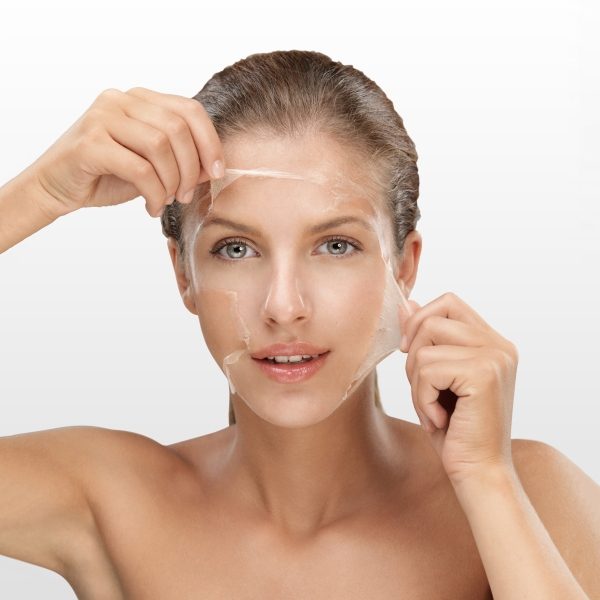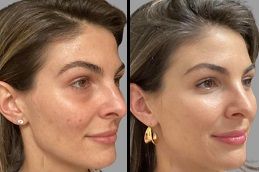 Custom SEO Strategy – Your Path to Page #1 Starts Here!
Custom SEO Strategy – Your Path to Page #1 Starts Here!
Rhinoplasty Trends: Current and Future Innovations
Written by Dynamic Clinic » Updated on: October 14th, 2024

Rhinoplasty, the surgical procedure designed to enhance or reconstruct the nose, has seen significant advancements in recent years, particularly in Dubai, a city renowned for its cutting-edge medical practices. As cosmetic surgery evolves, Dubai continues to be at the forefront of innovation, offering patients access to the latest techniques and technologies. This article explores the current trends in rhinoplasty in Dubai and highlights future innovations that promise to further refine the art of nasal surgery.
Current Trends in Rhinoplasty:
a. Personalized and Customized Approaches
One of the most notable trends in rhinoplasty is the move towards highly personalized and customized procedures. Surgeons in Dubai are increasingly utilizing advanced imaging technology and 3D simulations to create tailored surgical plans that align with each patient’s unique facial features and aesthetic goals.
3D Imaging and Virtual Planning: Surgeons use 3D imaging technology to create detailed models of the patient’s nose and face. This allows for precise planning and visualization of the expected outcomes, helping patients to better understand the potential results and make informed decisions.
Customized Implants and Grafts: For cases requiring structural support or augmentation, custom implants and grafts are designed based on the patient’s specific anatomy. This ensures a better fit and a more natural-looking result.
b. Minimally Invasive Techniques
Minimally invasive rhinoplasty techniques have gained popularity for their ability to achieve significant improvements with less downtime and fewer risks compared to traditional methods.
Endonasal Rhinoplasty: Also known as closed rhinoplasty, this technique involves making all incisions inside the nostrils. This approach reduces visible scarring and often results in a quicker recovery.
Ultrasonic Rhinoplasty: Using ultrasonic tools, surgeons can precisely reshape the nasal bones with minimal trauma to surrounding tissues. This technique improves precision and reduces postoperative swelling and bruising.
c. Preservation Rhinoplasty
Preservation rhinoplasty is an emerging trend that focuses on maintaining the natural structures of the nose while making aesthetic changes. This approach aims to preserve the integrity of the nasal framework, resulting in more natural-looking outcomes and potentially reducing the risk of complications.
Preservation of Cartilage and Bone: By preserving as much of the natural cartilage and bone as possible, surgeons can achieve desired changes while maintaining the structural support of the nose.
Less Aggressive Reshaping: This technique involves less aggressive reshaping of the nasal structures, which can lead to a more predictable and stable result.
d. Functional and Aesthetic Integration
Modern rhinoplasty in Dubai increasingly integrates both functional and aesthetic goals, addressing issues such as breathing difficulties alongside cosmetic concerns. This holistic approach ensures that the nose not only looks better but also functions optimally.
Septoplasty and Turbinate Reduction: For patients with functional issues such as a deviated septum or nasal obstruction, combining septoplasty or turbinate reduction with aesthetic rhinoplasty can improve both appearance and breathing.
Enhanced Breathing Post-Surgery: Surgeons are focusing on techniques that enhance airflow and nasal function as part of the overall aesthetic improvement.
Future Innovations in Rhinoplasty
a. Advanced Imaging and Artificial Intelligence
The future of rhinoplasty is likely to be significantly influenced by advancements in imaging technology and artificial intelligence (AI). These innovations will further enhance the precision and personalization of nasal surgery.
AI-Driven Predictive Models: AI algorithms can analyze vast amounts of data to predict surgical outcomes more accurately and tailor surgical plans to each patient’s unique needs. This can improve the predictability of results and minimize the risk of complications.
Enhanced 3D Visualization: Future imaging technologies will provide even more detailed and accurate 3D models of the nose, allowing for more precise planning and simulation of surgical outcomes.
b. Regenerative Medicine and Tissue Engineering
Regenerative medicine and tissue engineering are set to play a significant role in the future of rhinoplasty. These fields offer promising solutions for improving surgical outcomes and reducing recovery times.
Stem Cell Therapy: Stem cell therapy may be used to promote healing and regeneration of nasal tissues, potentially reducing the risk of scarring and improving the recovery process.
Bioengineered Grafts: The development of bioengineered grafts made from the patient’s own cells could provide more natural and long-lasting results compared to traditional implants.
c. Non-Surgical Rhinoplasty Enhancements
Non-surgical rhinoplasty techniques, such as injectable fillers and thread lifts, are expected to continue evolving, offering patients less invasive options for nasal enhancement.
Advanced Fillers: New types of injectable fillers with improved longevity and safety profiles will provide patients with more options for non-surgical nose reshaping.
Thread Lifts: Innovations in thread lift techniques will allow for more precise and long-lasting results in non-surgical rhinoplasty, providing a temporary yet effective solution for nasal contouring.
d. Personalized Postoperative Care
Future innovations will likely include personalized postoperative care strategies that leverage technology to enhance the recovery process and improve patient outcomes.
Wearable Technology: Wearable devices that monitor healing and recovery in real-time may provide valuable data to both patients and surgeons, allowing for more personalized care and early detection of potential issues.
Telemedicine Follow-Ups: The use of telemedicine for follow-up consultations will become increasingly common, enabling patients to receive ongoing care and guidance without the need for frequent in-person visits.
The Impact on Patients and the Industry:
The current and future trends in rhinoplasty will have a profound impact on both patients and the cosmetic surgery industry in Dubai.
Enhanced Patient Experience: The focus on personalization, minimally invasive techniques, and functional integration will lead to better patient experiences, with more natural-looking results and shorter recovery times.
Increased Accessibility: As new technologies and techniques become more widely available, rhinoplasty will become more accessible to a broader range of individuals seeking cosmetic and functional improvements.
Ongoing Innovation: Dubai will continue to be a leader in the field of cosmetic surgery, driving innovation and setting new standards for rhinoplasty procedures around the world.
Conclusion!
Rhinoplasty in Dubai is at the forefront of innovation, with current trends emphasizing personalization, minimally invasive techniques, and functional integration. The future promises even more advancements, with developments in AI, regenerative medicine, and non-surgical options poised to further enhance the field. As Dubai continues to lead the way in cosmetic surgery, patients can look forward to increasingly refined and effective rhinoplasty procedures that offer both aesthetic and functional benefits, ultimately contributing to a more confident and satisfying self-image.
Note: IndiBlogHub features both user-submitted and editorial content. We do not verify third-party contributions. Read our Disclaimer and Privacy Policyfor details.
Copyright © 2019-2025 IndiBlogHub.com. All rights reserved. Hosted on DigitalOcean for fast, reliable performance.














